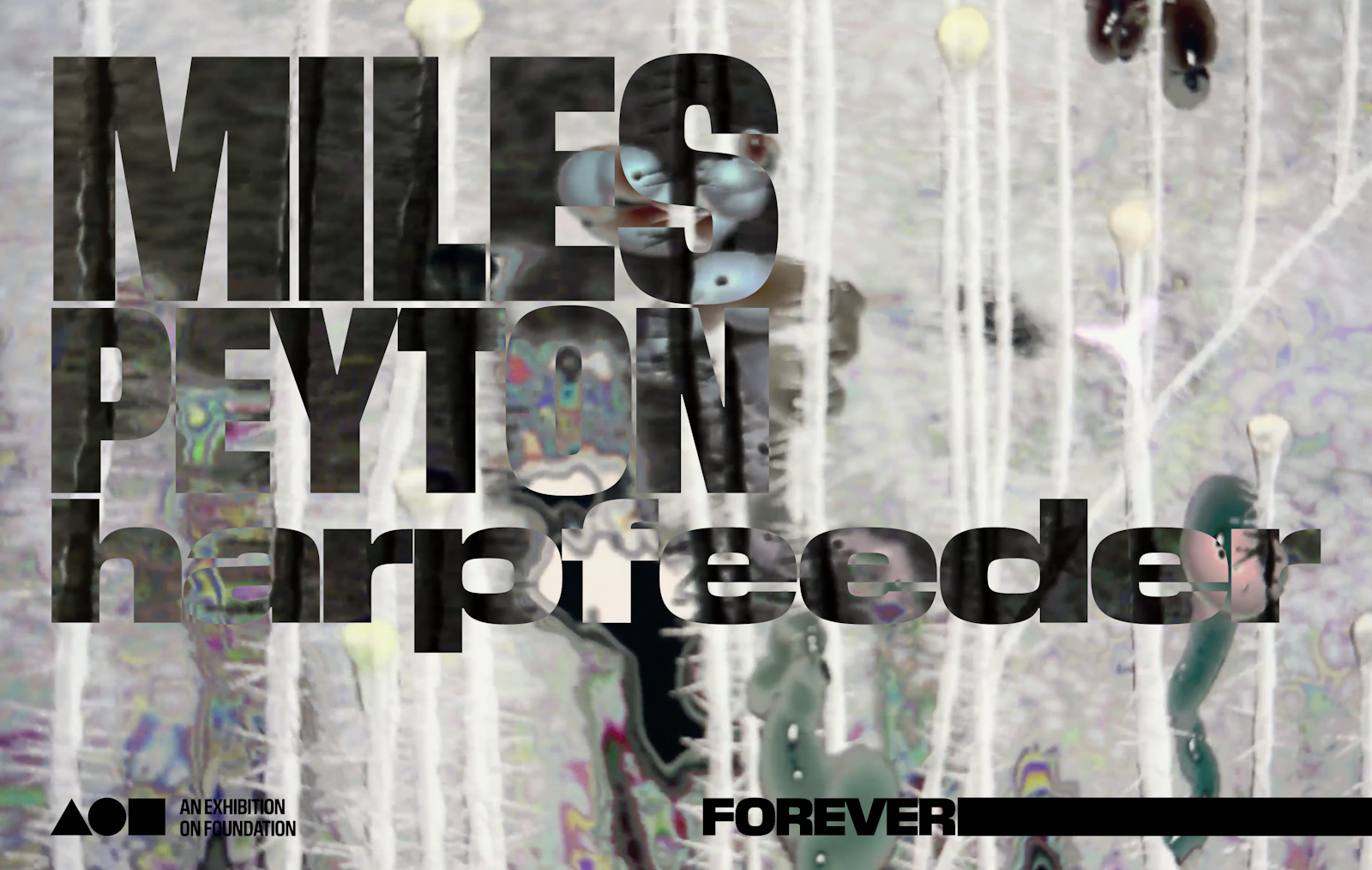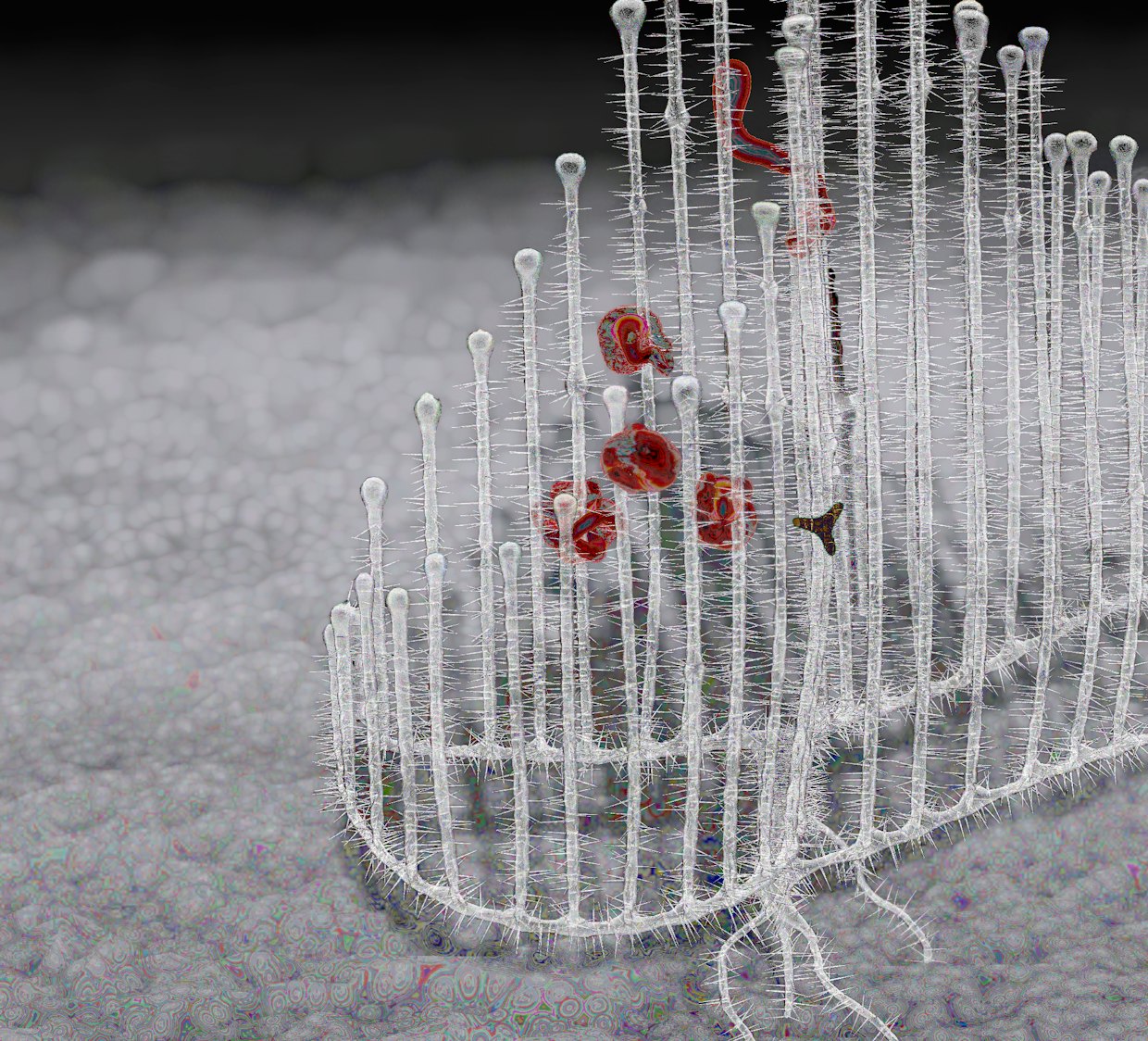
Miles Peyton has long been fascinated by the qualities of anomalous life forms. Presented by Forever Projects, his latest collection, harpfeeder, was inspired by a peculiar sea creature that was discovered off the coast of Northern California in 2012—ten thousand feet below the ocean’s surface. The strange species is anchored to the sea floor, gathering nutrients by straining microscopic animals and plant matter through its sticky, filtering body. It was dubbed the “harp sponge” because its basic structure resembles that of a musical harp, or lyre.
Each one consists of one or more curved vanes that connect a row of vertical tendrils, or limbs—spindly branches float upward, ending in a distinct bulbous sphere.

Drawing from this carnivorous sponge, Peyton uses a bespoke algorithm to generate a series of unique, skeletal harps. He built a navigable, interactive 3D environment for them in WebGL.
“Every single one is generated somewhat randomly. So different things about them vary: the number of main arms, the shape, the density of longer arms as they go up. I'm algorithmically sculpting it in that sense.”
Peyton began computer programming in Processing and Pure Data. He studied art and computer science at Carnegie Mellon before completing his MFA in Media Art at UCLA at the cusp of the pandemic. “Right around then, I think I was trying to understand how my work would exist in the world,” he explains, “I had always thought, okay, I will have to figure out how to adapt my work to the gallery system. But then the pandemic hit, and I just got kind of sucked into the web. I had made work for an online context in the past but now there was a way it could be sustained."


Borrowing from the classic first-person shooter interface, users can play within the browser, aiming and springing worms at the harp sponge that accumulate and curl around its limbs. Fluttery generative sounds can be heard as the worms hurl toward the harp and writhe around its outstretched arms.

harpfeeder brings a dynamic living organism to life onchain in a conceptually challenging series that stems from the artist’s previously minted-out NFT projects. Obaa (2023), introduced a series of 512 shapeshifting, jelly-fish like blobs that have been programmed to experience mortality. Each edition is one part in a collective organism, living within the shimmery underwater enclosure of the browser. “Some of them just started dying,” Peyton shares. The lifespan of the Obaa editions correspond with those of real sea creatures. Naturally, some are set to outlive others. Similarly, Porous Trainer (2022) offers a collection of spherical membranes, set within an bubbly enclosure that gets periodically permeated by flatworms.
“I've always been interested in displays of life in an art context, whether that's an aquarium, in a gallery or some kind of simulation of life. With 'harpfeeder', you're not as much of a disembodied viewer. You have more agency within this world. You can choose to shoot and spawn worms, but you don't have to.”
Watching and feeding this digital creature is ultimately a meditative, sensory experience—quite unlike the angular, rigid encounters we’ve come to expect from the generative art canon. In harpfeeder, Peyton uses new technologies and processes to shift and expand our perception, introducing an aquatic environment that mirrors the uncertain reality of ecosystems at the very depths of the ocean.
With new technology comes new stories.